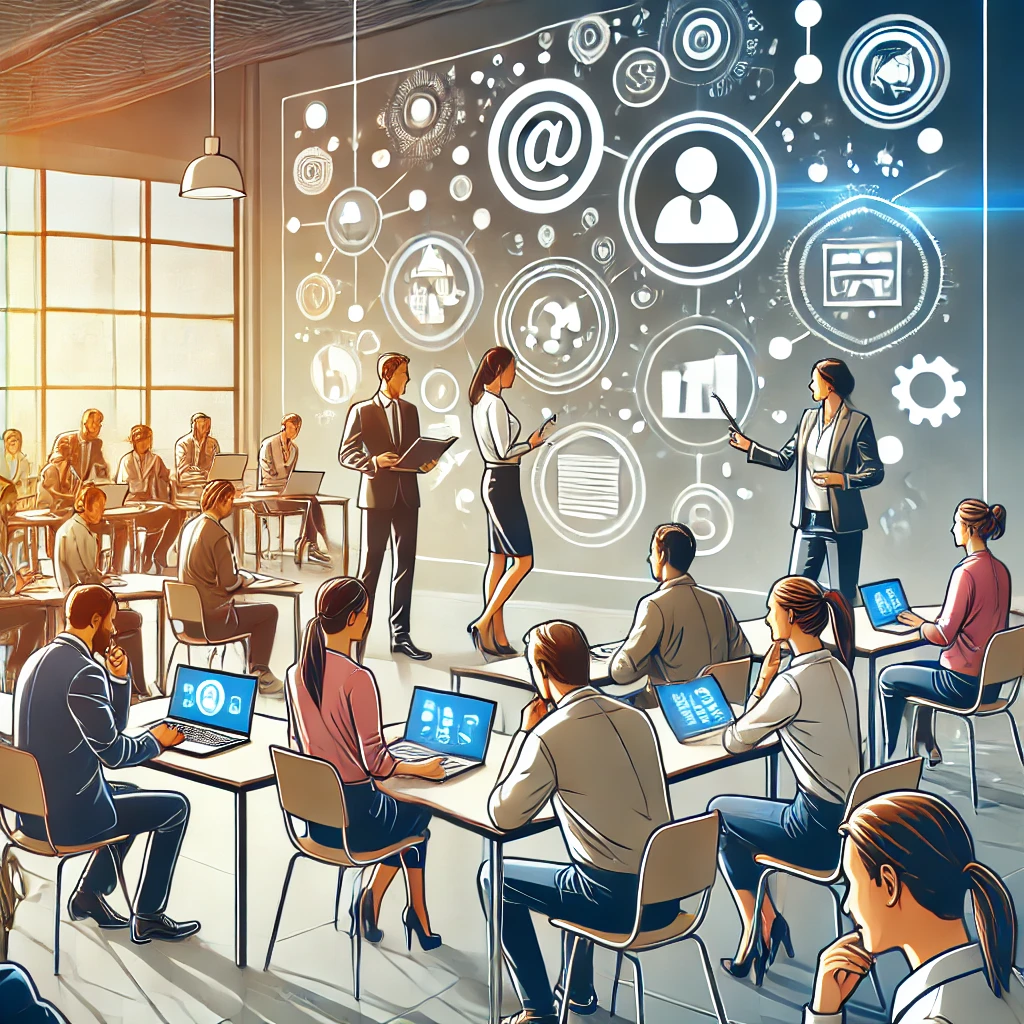Implementing Continuous Learning and Development in the Workplace
by Testola Team
- Jan 17, 2025
- 7 min read

Implementing Continuous Learning and Development in the Workplace
In today’s fast-evolving business landscape, organizations that prioritize continuous learning and development (L&D) gain a competitive edge. Employees equipped with up-to-date knowledge, skills, and competencies drive innovation, improve productivity, and foster long-term business growth. A well-structured L&D strategy not only benefits employees but also strengthens an organization’s ability to adapt to industry changes.
This guide explores why continuous learning is essential, the key strategies for implementation, and how Testola can help organizations create a culture of learning.
Why Continuous Learning Matters in the Workplace
Continuous learning goes beyond traditional training programs—it is an ongoing process that encourages employees to develop new skills, refine existing ones, and stay ahead in their careers. Here’s why learning and development should be a top priority:
1. Increases Employee Engagement and Retention
Employees are more likely to stay with companies that invest in their growth. When organizations provide opportunities for upskilling and career advancement, it leads to higher job satisfaction and lower turnover rates.
2. Enhances Innovation and Adaptability
Industries evolve rapidly, and companies that fail to keep up risk becoming obsolete. Continuous learning ensures that employees develop critical thinking, problem-solving, and technological skills, making them more adaptable to change.
3. Improves Productivity and Performance
Well-trained employees perform their roles more efficiently. Regular learning opportunities enhance workflow efficiency, reduce errors, and improve decision-making, ultimately boosting organizational productivity.
4. Supports Leadership Development
Investing in learning helps groom future leaders within an organization. Leadership training programs nurture talent, prepare employees for managerial roles, and ensure a strong pipeline of capable leaders.
Key Strategies to Implement Continuous Learning
Implementing an effective learning and development strategy requires planning, engagement, and the right tools. Here are practical steps to create a culture of continuous learning in the workplace:
1. Develop a Learning Culture
Encourage a growth mindset by fostering an environment where learning is valued. Employees should feel motivated to pursue professional development without fear of failure.
- Recognize employees who engage in self-learning.
- Encourage open discussions on new industry trends.
- Promote knowledge-sharing among teams.
2. Leverage Technology for Learning
Digital learning platforms have revolutionized corporate training. Investing in online courses, virtual workshops, and AI-driven assessments allows employees to learn at their own pace.
- Use learning management systems (LMS) to track progress.
- Offer mobile-friendly training modules for flexibility.
- Implement AI-powered skill assessments like Testola to evaluate learning outcomes.
3. Personalize Learning Plans
Every employee has different learning needs. Personalizing learning plans ensures that employees acquire role-specific skills and grow in alignment with organizational goals.
- Identify skill gaps and create targeted training programs.
- Offer a mix of technical, soft skills, and leadership training.
- Provide customized career development roadmaps.
4. Encourage Peer Learning and Mentorship
Mentorship programs and peer learning are cost-effective ways to facilitate knowledge transfer. Experienced employees can guide juniors, ensuring skills are passed down within the organization.
- Establish mentorship programs with senior employees.
- Organize knowledge-sharing sessions and cross-functional training.
- Create a collaborative learning space through discussion forums.
5. Offer On-Demand Learning Opportunities
Employees should have access to learning resources anytime, anywhere. Organizations can facilitate this by:
- Providing self-paced e-learning platforms.
- Offering microlearning sessions (short, focused learning bursts).
- Encouraging employees to attend webinars, industry conferences, and online workshops.
6. Measure Learning Effectiveness
To maximize the impact of L&D programs, organizations must track learning outcomes. Regularly assess employee progress and engagement using:
- Pre- and post-training assessments.
- Performance analytics and reports.
- Employee feedback surveys to improve learning initiatives.
How Testola Supports Learning and Development
1. Skill-Based Assessments
Testola offers a wide range of assessments that evaluate employees' strengths and areas for improvement. These tests help organizations design targeted learning programs.
2. Personalized Learning Paths
With Testola, companies can create customized training programs based on individual skill levels, ensuring personalized growth opportunities for employees.
3. Data-Driven Learning Insights
Testola’s analytics provide real-time performance tracking, helping organizations measure the effectiveness of their L&D programs.
4. Scalable and Flexible Learning Solutions
Whether a company is upskilling small teams or training an entire workforce, Testola’s scalable learning solutions cater to businesses of all sizes.
Final Thoughts
Organizations that prioritize continuous learning and development create a more engaged, productive, and future-ready workforce. By implementing structured L&D programs, companies enhance employee retention, drive innovation, and improve overall business performance.
With Testola, businesses can streamline skills assessments, track employee progress, and build a culture of lifelong learning.